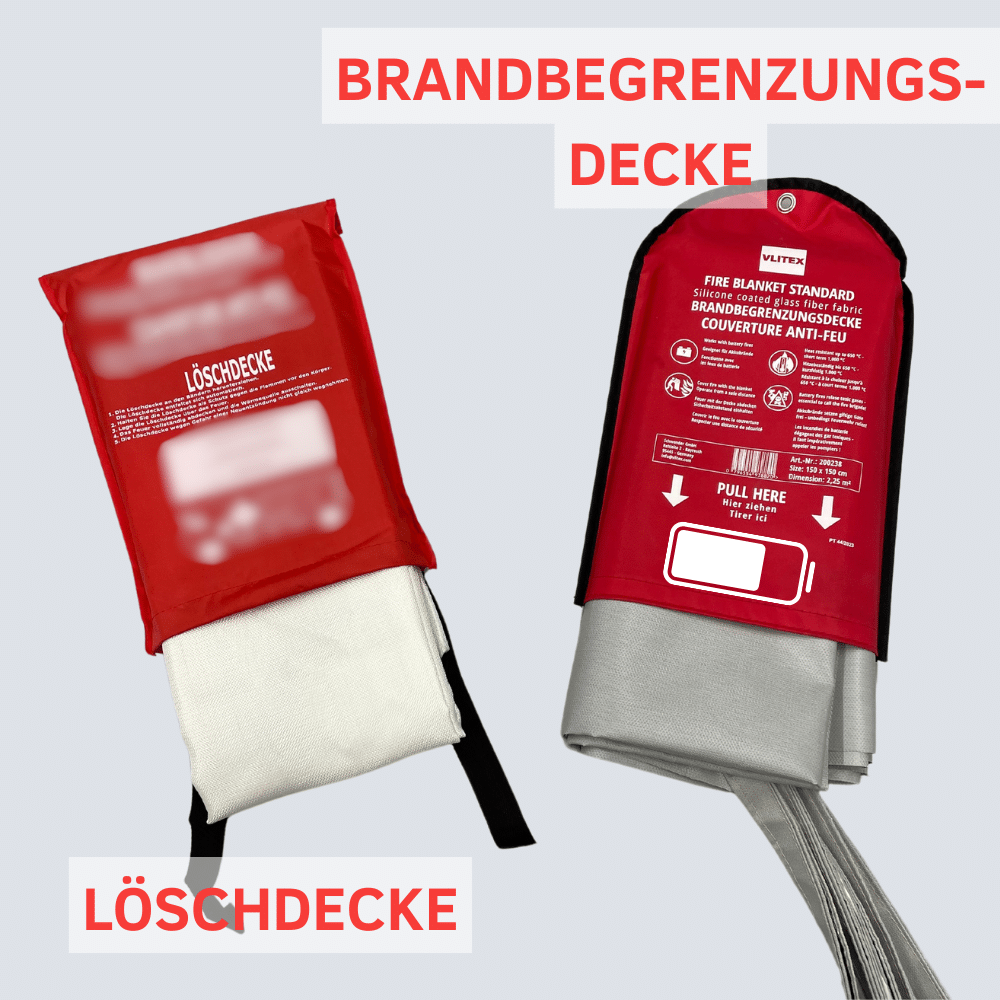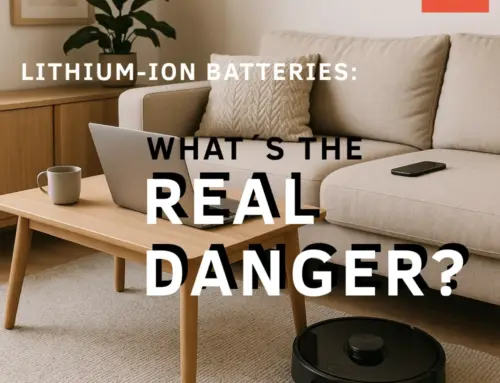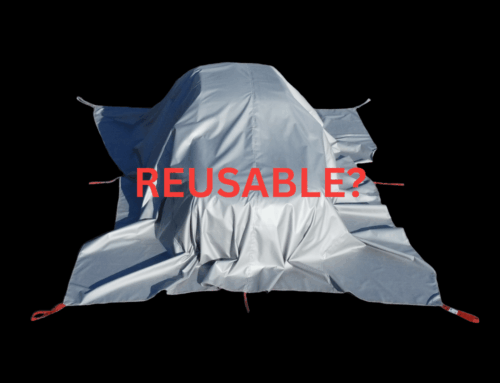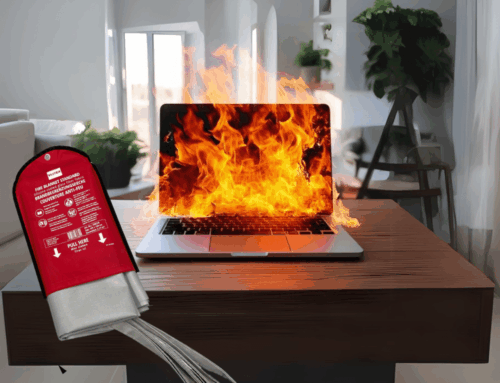
Fires can start anytime and anywhere - in homes, businesses, parking garages or electric vehicles. In such situations, quick and effective fire fighting is crucial. But which blanket is more suitable: a classic Fire blanket or a modern fire blanket ?
Many still rely on Fire blankets , but fire blankets offer more protection and more versatile applications . This article explains the differences, shows the respective applications and shows why a fire blanket is the better choice in many cases - both for private households and for companies and fire departments.
Table of contents
Why a Fire blanket not always enough
Fire blankets are specially designed for conventional fires . They are made of non-flammable material such as fiberglass or aramid and extinguish flames by removing oxygen . Common areas of application are:
- Paper or textile fires in households or offices
- small fires in commercial enterprises
- fires at home
- fires of small electrical appliances
But Fire blankets have one crucial weakness: they are ineffective in the case of battery fires , for example lithium-ion batteries in laptops, e-bikes or electric cars .
Why?
- Battery fires produce their own oxygen in each individual cell , making them impossible to smother .
- They can reach temperatures of over 1,300 °C , far more than most Fire blankets endure.
- Toxic smoke gases are produced, which pose a serious danger.
In such cases the fire blanket comes into play.
fire blankets : The more versatile solution
Suitable for conventional AND battery fires
In contrast to conventional Fire blankets can fire blankets both smother classic fires and safely contain battery fires under the ceiling .
That means:
- Private households no longer need a separate Fire blanket – a small fire blanket is completely sufficient.
- Companies and fire departments benefit from the versatility for a wide variety of fire types.
Availability in many sizes
fire blankets are available in different sizes, suitable for different purposes:
- Small models (1.5 x 1.5 m) for batteries, laptops or cordless screwdrivers
- Medium sizes (3 x 4 m or 6 x 8 m) for e-bikes and e-vehicles
- Large-format ceilings (up to 8 x 10 m) for forklifts, minibuses or storage areas
Comparison: Fire blanket vs. fire blanket
| Characteristic | Fire blanket | fire blanket |
|---|---|---|
| application area | Conventional fires | Conventional AND battery fires |
| Temperature resistance | Up to approx. 500 °C | Up to 1,300 °C (VLITEX STANDARD) / 1,750 °C (VLITEX PREMIUM) |
| deletion method | suffocation due to oxygen deprivation | Suffocation in conventional fires, confinement under the ceiling in battery fires |
| Suitable for battery fires? | No | Yes |
| Reduce toxic smoke gases | Yes | Yes |
| Reusable | No | Can be used multiple times depending on the fire load (only for fire departments with breathing apparatus) |
| application size | Small (up to approx. 1 m²) | Small (1.5 x 1.5 m) to Large (8 x 10 m) |
| Suitable for private households | Yes | Yes (in case of conventional fires, as a precaution in case of battery fires) |
| Suitable for fire departments | Restricted | Yes (also for large vehicles) |
| Recommended use | Small conventional fires in households and businesses | Small conventional fires as well as preventive measures for battery fires in households and businesses and battery fires for trained personnel |
The correct use of fire blankets
Conventional fires
fire blankets work in the same way for classic fires as Fire blankets :
- Oxygen deprivation extinguishes the flames.
- Smoke development and heat radiation are reduced.
- Extinguishing water is not absolutely necessary, which reduces or even prevents water and environmental damage.
Battery fires – special challenges
Battery fires are particularly dangerous because they:
- Can burn for hours or days (depending on, for example, the battery strength and charge level).
- Develop extremely high temperatures (up to 1,300 °C).
- React explosively
- Release toxic fumes.
Here a fire blanket in two ways:
1. Preventive:
- Place over the battery to protect the surrounding area in case of overheating and possible ignition.
- Take protective measures when loading or storing.
- If the battery is damaged, limit the possibility of ignition under the ceiling.
2. In case of fire (only for firefighters with PPE!):
- Limit the fire and protect the surrounding area from the flames spreading.
- Significantly reduce smoke development.
Important: If the battery is already on fire, untrained people without PPE should leave as quickly as possible. Without protective equipment, it is not advisable to put a blanket over it afterwards.
Fire departments are already using fire blankets successfully , especially on motorways, in parking garages and workshops.
You can find out more about the practical application in our mission report with the Helmstadt fire department .
fire blankets are the better choice
Fire blankets are useful for conventional fires, but ineffective for battery fires . fire blankets are the only solution that can protect against both classic fires and battery fires .
If you want to ensure long-term safety, it is better to use a fire blanket - it offers more comprehensive protection, prevents consequential damage and is suitable for many scenarios.
Learn more
For more information about our broad portfolio of fire blankets can be found on the VLITEX product page .
External source:
Further scientific findings on the safety of battery fires can be found on the Fraunhofer Institute .









